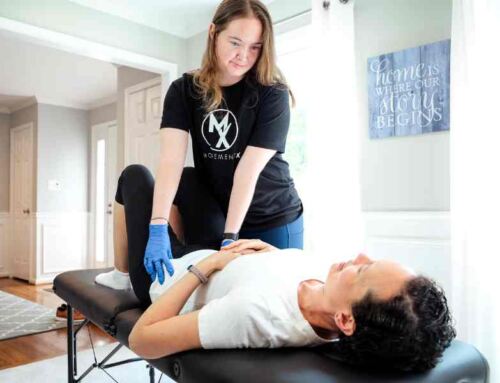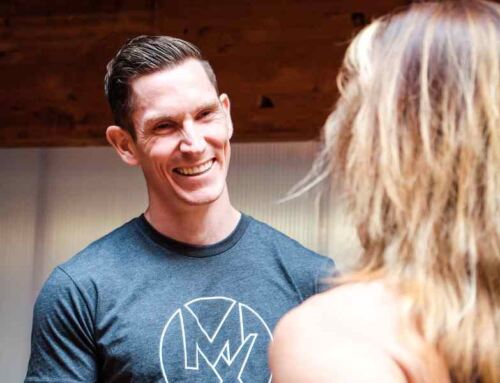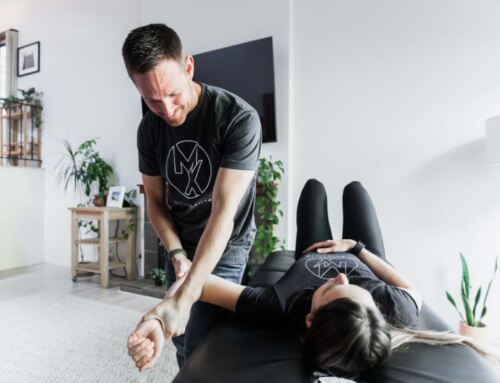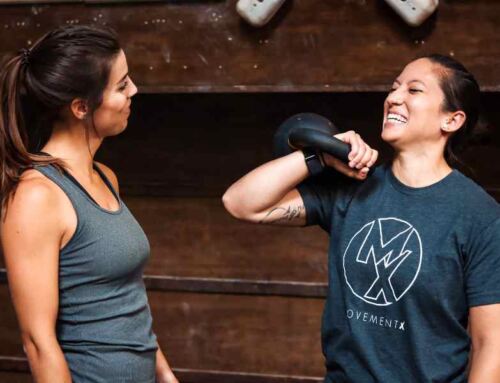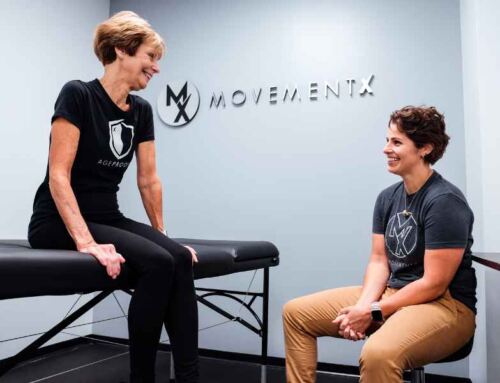Low back pain is a serious issue in today’s world – estimates from a study published in January of 2025 reported that 271 million adults over the age of 55 experienced back pain in a single calendar year [1], and estimates across studies show that about 60-80% of us will experience low back pain at some point in our lifetime [2], myself recently included!
Sadly, despite having access to more information than ever through social media, the internet, and AI, there is still a ton of misinformation out there in regards to how to not only overcome a major back injury, but also protect yourself from future injuries.
More Information Isn’t Always Better!
The single biggest piece of misinformation I have seen is that there is little to no benefit, and, conversely, a lot of risk addressing injuries by directly strengthening the muscles of the low back and the supporting structures of the hips and upper back.
In simpler terms, many health professionals will say that you need to avoid strength training, specifically the deadlift movement, in order to keep your back healthy long term.
Sadly, while this information is always well-intentioned, it is actually more harmful than it is helpful, and following it has serious consequences both in the short- and long-term for your health!
What is a Deadlift, Really?
Now, when a PT, chiropractor, strength coach or trainer says the word “deadlift”, most people get terrified and think of gigantic bodybuilders straining, screaming, potentially even bleeding, and lifting a barbell loaded with giant metal plates off the ground.
The word deadlift has sadly become synonymous with a very specific exercise, so in the past and going forward, I always like to clarify what I mean by calling the movement a “Hip Hinge”.
A Hip Hinge simply means any movement in which someone keeps their spine and knees relatively still, and moves their hips backwards and forwards.
What goes through my mind when I say Hip Hinge is not necessarily that big, scary deadlift, but instead I see a grandmother bending forwards to pick her granddaughter off the ground! Maybe it’s a father picking up bales of fresh sod from his driveway and putting them on a wheelbarrow. Or maybe it’s one of the handful of different exercises in the gym that work the same muscles and are interchangeable with that scary deadlift that might have popped in your mind initially.
The Benefits of Strength Training the Hip Hinge
Now, regardless of all the variety of Hip Hinges we are going to experience in our daily lives, another point I like to make to all my clients, patients and even friends and family, is that “doing” and “training” are very different things!
The goal of training should be to progressively get your body ready to not only handle, but to dominate, the things you are doing in your day to day life. This is how we can keep our body far from the brink of injury and pain, because we have built ourselves up so much that nothing we do on any given day will cause our body to crumble and fall into disrepair.
So, for that grandmother picking up her growing granddaughter, it is important that not only does she practice picking up her grandchild, but also finds movements that she can do each day that will help her be able to pick up a much heavier load than her granddaughter will be. Anyone who has picked up a wiggly baby from a crib knows that you can’t always have the best “form” and posture while doing so, and you won’t always have a perfectly still, cooperative baby on your hands! If our ability is tapped out at lifting say a 20 pound object, and we need perfect form and a cooperative object (think – a dumbbell or kettlebell) to handle this amount of weight, we open ourselves up to issues when we go to pick up that 22 lb. baby from the crib and they decide they want to wiggle around to grab a toy from the ground while we are trying to lift them up!
What’s even better is that there is more evidence coming out each day to show how much strength and muscle mass, whether that is in the trunk and core muscles [3] or just your whole body in general [4], can help protect you either from injuring your back in the first place, or, when that injury does happen, helps you recover better and quicker.
Let’s say all the above and more has convinced you that you need to add some Hip Hinging into your daily routine. Now what?!
The single biggest piece of advice I can give that will help whoever is reading this article is this:
Find the right exercise for your current capabilities and your body dimensions before doing anything else, and then learn how to progressively attack that exercise over a few weeks and months before gauging your progress!
Fit the Exercise To YOU, Not You to the Exercise
To unpack that first statement, in just a few seconds I can think of no less than 15 different ways to perform a Hip Hinge movement that we can cycle through in order to make the movement comfortable and easier on your flexibility and your body proportions.
As a quick example, some athletes may have no issue performing a Conventional Deadlift, which would be the image that probably popped into your head the first time you read the word deadlift in this article – stand up tall with your feet about shoulder-width apart, bend forwards, and pick up a loaded barbell from the ground to your waist!
However, many athletes with long limbs and shorter torsos would benefit from a wider stance where their feet are so wide that they grip the bar inside their long legs! This would be called Sumo-Stance Deadlift that totally falls under the category of “Hip Hinge” but really doesn’t look the same as the Conventional Deadlift.
For some clients that have really sensitive low backs and need other exercises to address those areas, a Single Leg Deadlift can be a great way to help the hips, low back and hamstrings get stronger and more flexible while taking compression load off the spine almost entirely.
You can even get fancier, depending on what equipment you have available to you, and use cables, bands, kettlebells, or a Hex Bar, to fit the exercise to you instead of forcing yourself into uncomfortable positions.
Many people, including myself, would also argue that exercises like a Glute-Ham Raise, which is increasingly popular in CrossFit gyms, or even back extensions, can be viewed as a Hip Hinge as well!
Long story short, there are so many different ways to fit the exercise to you that there is no excuse not to be Hip Hinging! The key is to find a qualified health professional, strength coach, or personal trainer, who has a keen eye in measuring and analyzing your body and your movement in order to find the right exercise for you for now and for life.
Heavy is a Relative Term
To unpack the second part of my statement above, realize that “heavy” weights are a relative term! 20 lbs. of weight might be heavy to you, and that is totally fine! 400 lbs might be very heavy to me, but is absolutely nothing to a sprinter, a football player, or my powerlifting champion neighbor down the street.
Once you find the right exercise to get you started, give yourself time and space to modify and perfect your form, and time for your body to grow and adapt to the challenge you are giving yourself.
If your back is actively bothering you, a qualified healthcare professional like you’ll find throughout the country with MovementX will be able to best ease you into both a movement and a load that will be productive for you instead of causing more discomfort. In my experience, I have even sometimes unweighted people, using strategic bands, tables and chairs, in order to start working on Hinging our Hips in an even more comfortable way.
Once you’ve overcome that discomfort, a challenging set of 8-12 reps can be a great place to start and slowly build up resistance, to the point where maybe now your pain is completely gone and we can start to tackle higher-level, performance-based goals like hitting a golf ball farther, being able to do hours and hours of yardwork, or even picking up your now toddler-aged granddaughter!
Summary
In summary, don’t be scared of the frightening “deadlift” word!
Building strength is the best way to not only heal yourself from an existing injury, but to also protect yourself down the road from a repeated or even worse injury.
The key is to find the movement and the load that works for you for now, so that you can find a comfortable but challenging starting place to build momentum off of towards a pain-free and fulfilling life!
References
- Manek NJ, MacGregor AJ. Epidemiology of back disorders: prevalence, risk factors, and prognosis. Curr Opin Rheumatol. 2005 Mar;17(2):134-40. doi: 10.1097/01.bor.0000154215.08986.06. PMID: 15711224.
- Xu S, Chen J, Wang C, Lin Y, Huang W, Zhou H, Ji W, Chen Y. Global, regional, and national burden of low back pain for adults aged 55 and older 1990-2021: an analysis for the global burden of disease study 2021. BMC Musculoskelet Disord. 2025 Jan 23;26(1):81. doi: 10.1186/s12891-025-08326-3. PMID: 39849415; PMCID: PMC11756215.
- Cho, kang Hee & Beom, Jae & Lee, Tae & Lim, Jun & Lee, Tae & Ji Hyun, Yuk. (2014). Trunk Muscles Strength as a Risk Factor for Nonspecific Low Back Pain: A Pilot Study. Annals of rehabilitation medicine. 38. 234-40. 10.5535/arm.2014.38.2.234.
- Wang, P., Lu, X., Wen, M. et al. Association between muscle strength and low back pain among middle-aged and older adults: a cross-sectional study. BMC Public Health 25, 1869 (2025). https://doi.org/10.1186/s12889-025-23050-2
About the Author
Dr. Bobby Prengle is a physical therapist based in Raleigh, NC. He treats orthopedic sports, neurologic, and age-based conditions. Bobby Prengle specializes in treating various athletes (golfers, rotational, runners, racket sports, impact sports) and active adults. With a passion for leveraging technology and leading research in his treatment, Dr. Bobby Prengle is ready to help you find the perfect blend of challenge and progress to get results.



